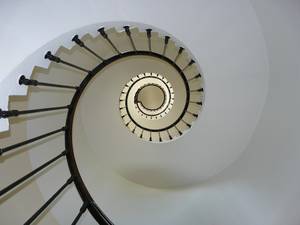Mythconception: the golden ratio
Interview with
In this week's mythconception, Tim Revell is going for gold! 
Tim - Grab a ruler and measure the distance from your elbow to your wrist and then from your elbow to your fingertips. Divide the two measurements and what do you get? Math's most divine number - the golden ratio - or something close to it, or not so close to it. The myth isn't that precise.
The golden ratio is the solution to the equation x2 -x-1=0, which turns out to be about 1.618. That could be the end of the story but there are many golden ratio 'mathconceptions', with most of the imparting an almost religious like level of infatuation with the number. It's known as the divine ratio for it's sheer beauty... seriously.
They say architecture, painting, music, and even human faces with golden ratio proportions are universally preferred, but that's just bunk. When you actually test the proportions that people like most, there's never any preference for the golden ratio.
The myth pushers also love to say that the ancient Greeks built the Parthenon in Athens using the golden ratio and that's why it's so beautiful, but it's simply not true. All you need to do is measure it to find out.
The golden ratio is, actually, a really cool number with plenty of proper mathematical reasons to interested in it. The myths just detract from it. My favourite example links the fibonacci sequence, the golden ratio, and plants. The fibonacci sequence is the one where the next number in the sequence is found by adding together the previous two. So starting with the sequence one one - the next number in the sequence is two. Found by adding together one and one. Then the next in the sequence is three, found by adding together one and two. And then the next is five, found by adding together two and three and so on. Meaning that the first few fibonacci's are one, one, two, three, five eight.
Almost magically, if you work out the ratio between each consecutive number in the fibonacci sequence, you end up dancing around the golden ratio getting close and closer as the numbers get higher. The ratio three to two is 1.5, just below the golden ratio. The ratio five to three is 1.67, just above the golden ratio. And the ratio eight to five is 1.6, just below the golden ratio. As you get closer to infinity, the relationship between fibonacci numbers gets closer to the golden ratio. And plants love this too.
Imagine trying to build the most efficient plant ever. You want to place your leaves in such a way that they overlap as little as possible to catch the most sunlight. Plants grow leaves in simple ways, with the angle between successive leaves always the same. So to design the best plant ever, all you need is to choose the optimum angle. The answer... divide the circle by the golden ratio then the resulting angle ensure your leaves never directly overlap.
Incredibly, real life plants actually seem to use this. This means that when you look at the leaf patterns created, you almost end up with fibonacci numbers, e.g. in the number of petals on a daisy or the number of spirals on a pine cone.
The golden ratio is actually pretty special - just not in the way a lot of people think.
- Previous King of the swingers
- Next Gut bugs affect DNA expression










Comments
Add a comment